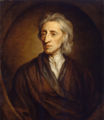Consciousness facts for kids
Consciousness is about being awake, aware, and able to react to what's happening around you. Think of it as your mind being "on" and noticing things.
Scientists and thinkers in different fields like psychology (the study of the mind), neuroscience (the study of the brain), and philosophy (the study of big ideas) often have slightly different ideas about what consciousness truly means. It's a topic that many experts still debate!
Consciousness isn't just an "on" or "off" switch; it's more like a spectrum or a sliding scale. This means there are many different levels between being fully awake and aware, and being completely unconscious (like when you're in a deep sleep or unconscious from an injury).
In medicine, doctors use something called the Glasgow Coma Scale (GCS) to measure how conscious a person is. They give a score between 3 and 15. A higher score means the person is more awake and responsive, while a lower score means they are less conscious.
Contents
What Happens Without Us Knowing?
It might surprise you, but many things our bodies and minds do happen without us even thinking about them! These actions are handled by what some call the unconscious mind. For example, you don't have to tell your heart to beat or your lungs to breathe. These important jobs are managed by your autonomic nervous system.
You can choose to notice your breathing or your heartbeat, but your body keeps them going all by itself, without you having to think about it. This shows that a lot goes on behind the scenes, even when we're not consciously aware of it.
The Big Question: Are Others Conscious?
One of the biggest mysteries about consciousness is what causes it. Because we don't fully understand it, it's hard to know for sure if another person or even an animal is truly conscious in the same way we are.
We usually assume that other people are conscious, just like us. But it's actually impossible to prove it for certain! This interesting puzzle is known in philosophy as the problem of other minds. While we can't prove it, many animals, like bats, seem to be very aware of their surroundings.
Images for kids
-
Representation of consciousnes from the seventeenth century by Robert Fludd, an English Paracelsian physician
-
John Locke, British Enlightenment philosopher from the 17th century
-
Illustration of dualism by René Descartes. Inputs are passed by the sensory organs to the pineal gland and from there to the immaterial spirit.
-
Thomas Nagel argues that while a human might be able to imagine what it is like to be a bat by taking "the bat's point of view", it would still be impossible "to know what it is like for a bat to be a bat." (Townsend's big-eared bat pictured).
See also
 In Spanish: Conciencia (filosofía) para niños
In Spanish: Conciencia (filosofía) para niños






